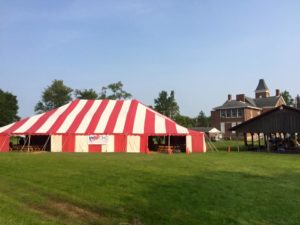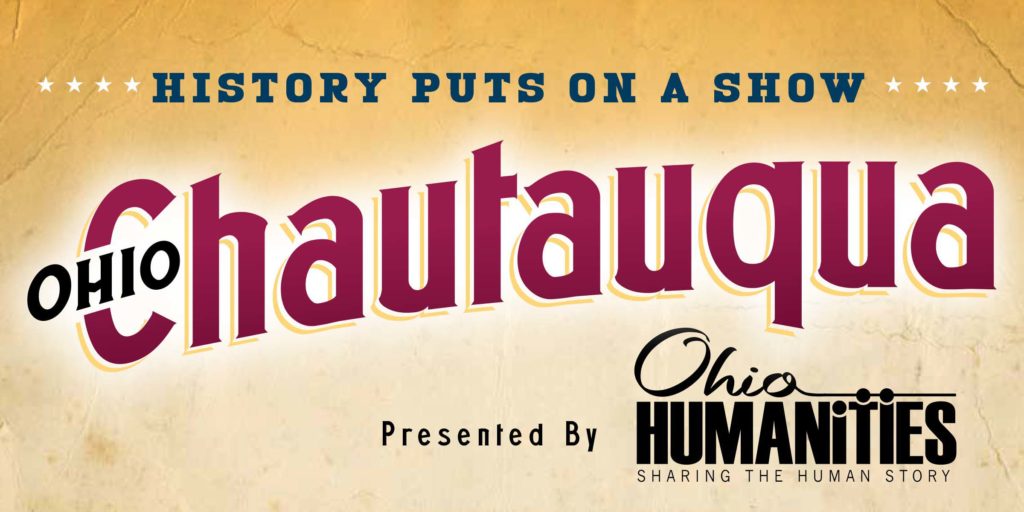“The Tradition of Reinvention”
Over one hundred and forty years ago, a gathering took place at the waterfront of Lake Chautauqua in western New York. The organizers had planned training courses for Sunday school teachers to be held each summer. This became a learning center that soon grew to include lectures on political, theological, and social issues of the day. Courses were added on subjects such as literature and foreign languages. What had begun as something of an educational symposium became a mainstay event of culture and learning for the general public. From the beginning there was a focus on bringing intellectually enriching experiences to working-class Americans who had been generally excluded from high-minded activities of this sort. Luminaries such as Mark Twain, headlined the ever-popular events, and many US residents made regular appearances.
Communities across the Midwest began hosting “Circuit Chautauquas,” as they were sometimes called, which brought culture and entertainment to these rural towns under a “big top” tent. The lectures and discussions on leading topics soon included Broadway performances and musical acts. The movement was considered to be a version of the urban art scene for people of small-town, rural America. By the turn of the century the Chautauqua tents drew hundreds of thousands of attendees across the country. President Theodore Roosevelt is said to have called the Chautauqua phenomenon “the most American thing in America.”
Nothing lasts forever, of course, and Chautauquas eventually fell out of favor and were replaced by popular radio programs and television, and in a broader sense, the cultural shifts brought about by the rise of the automobile. Although the Chautauqua movement is regarded as a bygone chapter in our collective history, there has been a revitalized version of the traveling performances and educational workshops making their way into the fabric of everyday America again. The largest and perhaps most prestigious of these “new Chautauquas” is the Ohio Chautauqua, which is produced by the Ohio Humanities Council and funded by the National Endowment for the Humanities. It celebrates its sixteenth year this summer with weeklong events being held in four communities across the state. Cities and towns are selected to host the event a year in advance and must submit to a rigorous application process in order to hold the coveted title of host community.
 Enter Clifton, Ohio, which is proud to have been selected as one of the four host communities for the 2017 Ohio Chautauqua. The small village, straddling the Greene and Clark county line, and bordering the popular college towns of Cedarville and Yellow Springs, is a historic landmark in its own right, with one of the state’s most visited nature preserves and one of the largest water-powered grist mills still in existence. However, Clifton is also a cultural crossroads, connecting our past to our future in unique and creative ways that set it apart from other villages of its size. For instance, the historic opera house, built in 1893, is today a vibrant music venue, featuring two live performances per week as well as seasonal theatrical productions. The Clifton Union Schoolhouse, a building constructed in 1872, has a newly renovated community theater space that is open to the public weekly and houses the second floor private art studio of a world renowned painter. A contemporary art gallery was recently opened in the historic town hall, which is now an active senior citizen center. The town also puts on an annual music and arts festival named after the ancient geological particularity, the Clifton Gorge.
Enter Clifton, Ohio, which is proud to have been selected as one of the four host communities for the 2017 Ohio Chautauqua. The small village, straddling the Greene and Clark county line, and bordering the popular college towns of Cedarville and Yellow Springs, is a historic landmark in its own right, with one of the state’s most visited nature preserves and one of the largest water-powered grist mills still in existence. However, Clifton is also a cultural crossroads, connecting our past to our future in unique and creative ways that set it apart from other villages of its size. For instance, the historic opera house, built in 1893, is today a vibrant music venue, featuring two live performances per week as well as seasonal theatrical productions. The Clifton Union Schoolhouse, a building constructed in 1872, has a newly renovated community theater space that is open to the public weekly and houses the second floor private art studio of a world renowned painter. A contemporary art gallery was recently opened in the historic town hall, which is now an active senior citizen center. The town also puts on an annual music and arts festival named after the ancient geological particularity, the Clifton Gorge.
It is in this spirit of preserving our rich historic character while finding new ways to revitalize our community’s landscape that Clifton embodies the importance of the arts and humanities in building a strong community and creating a dynamic future. It is the tradition of reinvention that is truly the most American thing in America.


